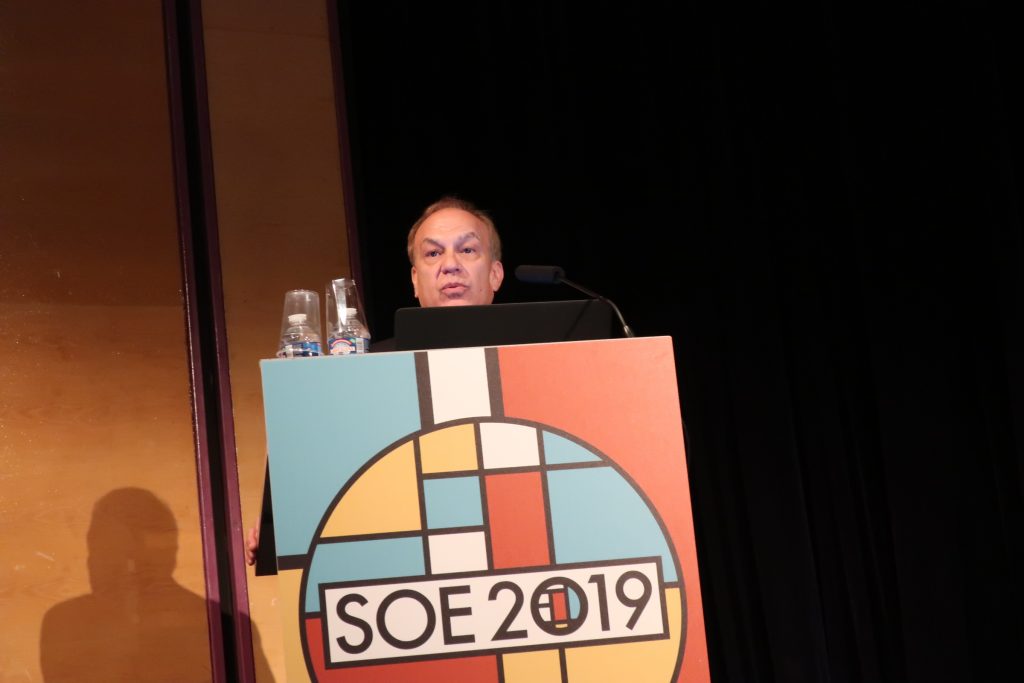Challenges in paediatric keratoplasty

Dermot McGrath
Published: Monday, June 17, 2019
 Gerald W. Zaidman MD
Corneal transplantation in a paediatric patient population poses special challenges, but good results may still be obtained with careful case selection, rigorous surgery and meticulous postoperative care, according to Gerald W. Zaidman MD.
Speaking during a World Society of Paediatric Ophthalmology and Strabismus (WSPOS) symposium held during the 2019 European Society of Ophthalmology (SOE) meeting in Nice, France, Dr Zaidman said that attempting keratoplasty in children is very different from adults.
“The challenge is that we are dealing with severe ocular pathology in a technically difficult surgical situation with a small eye, an elastic sclera and very shallow anterior chamber, with anterior displacement of the iris and lens, a young patient who does not cooperate, who is hard to examine and who can reject their corneas literally overnight,” he said.
The indications are also markedly different than adult corneal transplant patients, the vast majority of whom have endothelial disease, keratoconus or failed grafts, said Dr Zaidman.
“I have performed over 400 transplants in children and congenital diseases easily make up the vast bulk of the patients, primarily Peter's anomaly, sclerocornea, endothelial dystrophy and congenital glaucoma. Trauma is the second single indication and then in older children and adolescents we encounter keratoconus, herpes, corneal ulcers and rosacea,” he said.
Family cooperation plays a critical role in obtaining successful outcomes, noted Dr Zaidman, as the postoperative course involves a marathon of exams, including multiple exams under anaesthesia, and treatment of amblyopia and glaucoma.
In terms of results, Dr Zaidman said that patients with Peter's anomaly type I usually obtained the best visual outcomes, with 54% obtaining visual acuity of 20/100 or better after three years. Children with glaucoma generally had the worst prognosis, he added.
The symposium also included talks from Marie-Helene Errera, United States, Daisy Godts, Belgium, Isabel Deboutte, Belgium,and Dominique Bremond-Gignac, France. The symposium was chaired by Dominique Bremond-Gignaca and Daisy Godts.
Gerald W. Zaidman MD
Corneal transplantation in a paediatric patient population poses special challenges, but good results may still be obtained with careful case selection, rigorous surgery and meticulous postoperative care, according to Gerald W. Zaidman MD.
Speaking during a World Society of Paediatric Ophthalmology and Strabismus (WSPOS) symposium held during the 2019 European Society of Ophthalmology (SOE) meeting in Nice, France, Dr Zaidman said that attempting keratoplasty in children is very different from adults.
“The challenge is that we are dealing with severe ocular pathology in a technically difficult surgical situation with a small eye, an elastic sclera and very shallow anterior chamber, with anterior displacement of the iris and lens, a young patient who does not cooperate, who is hard to examine and who can reject their corneas literally overnight,” he said.
The indications are also markedly different than adult corneal transplant patients, the vast majority of whom have endothelial disease, keratoconus or failed grafts, said Dr Zaidman.
“I have performed over 400 transplants in children and congenital diseases easily make up the vast bulk of the patients, primarily Peter's anomaly, sclerocornea, endothelial dystrophy and congenital glaucoma. Trauma is the second single indication and then in older children and adolescents we encounter keratoconus, herpes, corneal ulcers and rosacea,” he said.
Family cooperation plays a critical role in obtaining successful outcomes, noted Dr Zaidman, as the postoperative course involves a marathon of exams, including multiple exams under anaesthesia, and treatment of amblyopia and glaucoma.
In terms of results, Dr Zaidman said that patients with Peter's anomaly type I usually obtained the best visual outcomes, with 54% obtaining visual acuity of 20/100 or better after three years. Children with glaucoma generally had the worst prognosis, he added.
The symposium also included talks from Marie-Helene Errera, United States, Daisy Godts, Belgium, Isabel Deboutte, Belgium,and Dominique Bremond-Gignac, France. The symposium was chaired by Dominique Bremond-Gignaca and Daisy Godts.